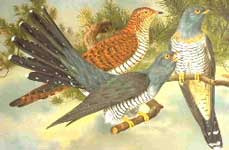.
Polykleitos (or Polycletus, Polycleitus, Polyclitus) was a Greek sculptor of the 4th century BC.

The Doryphoros of Polykleitos (Polyclitus) or the idealized sculpture (Canon)
The Diadoumenos of Polykleitos
He was of the school of Argos, a contemporary of Pheidias and in the opinion of the Greeks his equal. He made a figure of an Amazon for Ephesus which was regarded as superior to the Amazon of Pheidias made at the same time; and his colossal Hera of gold and ivory which stood in the temple near Argos was considered as worthy to rank with the Zeus of Pheidias. He also sculpted a famous bronze figure of a nude man known as the Doryphoros, or spear-carrier, which survives through numerous Roman copies. Scopas and Lysippus are scholars of this sculptor. One of the most important characteristics is the Ponderation.
Pausanias:
Passing over a statue of Creugas..., you come to a seated image of Zeus Meilichius (Gracious), made of white marble by Polycleitus. I discovered that it was made for the following reason. Ever since the Lacedaemonians began to make war upon the Argives there was no cessation of hostilities until Philip, the son of Amyntas, forced them to stay within the original boundaries of their territories. Before this, if the Lacedaemonians were not engaged on some business outside the Peloponnesus, they were always trying to annex a piece of Argive territory; or if they were busied with a war beyond their borders it was the turn of the Argives to retaliate.
When the hatred of both sides was at its height, the Argives resolved to maintain a thousand picked men. The commander appointed over them was the Argive Bryas. His general behavior to the men of the people was violent, and a maiden who was being taken to the bridegroom he seized from those who were escorting her and ravished. When night came on, the girl waited until he was asleep and put out his eyes. Detected in the morning, she took refuge as a suppliant with the people. When they did not give her up to the Thousand for punishment both sides took up arms; the people won the day, and in their anger left none of their opponents alive. Subsequently they had recourse to purifications for shedding kindred blood; among other things they dedicated an image of Zeus Meilichius.
Pausanias:

The statue of Hera is seated on a throne; it is huge, made of gold and ivory, and is a work of Polycleitus. She is wearing a crown with Graces and Seasons worked upon it, and in one hand she carries a pomegranate and in the other a sceptre. About the pomegranate I must say nothing, for its story is somewhat of a holy mystery. The presence of a cuckoo seated on the sceptre they explain by the story that when Zeus was in love with Hera in her maidenhood he changed himself into this bird, and she caught it to be her pet. This tale and similar legends about the gods I relate without believing them, but I relate them nevertheless.
Kyniskos athlete , c. 440 BC (a version maybe is the "Westmacott" boy, in the British Museum)
See also Polykleitos the Younger
References
Polyclitus, 1911 Encyclopaedia Britannica; [1] (http://35.1911encyclopedia.org/P/PO/POLYCLITUS.htm)
Greek works mentioning Polykleitos include:
Pausanias, Description of Greece
Pliny the Elder, Naturalis Historia
This article incorporates text from the public domain 1911 Encyclopædia Britannica.
| Ancient Greece
Science, Technology , Medicine , Warfare, , Biographies , Life , Cities/Places/Maps , Arts , Literature , Philosophy ,Olympics, Mythology , History , Images Medieval Greece / Byzantine Empire Science, Technology, Arts, , Warfare , Literature, Biographies, Icons, History Modern Greece Cities, Islands, Regions, Fauna/Flora ,Biographies , History , Warfare, Science/Technology, Literature, Music , Arts , Film/Actors , Sport , Fashion --- |
Retrieved from "http://en.wikipedia.org"
All text is available under the terms of the GNU Free Documentation License

